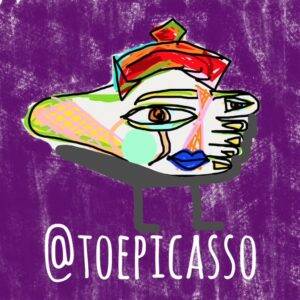Some people may wrongly assume that bunions are merely a cosmetic issue. While bunions can become quite pronounced, they can also contribute to a significant amount of pain and discomfort. Indeed, bunions can become inflamed, swollen, and irritated for a variety of reasons. So, to address our question of the day: why is my bunion throbbing? The answer is probably a result of irritation and prolonged growth. Here, we’ll explain what causes bunion pain –– and more importantly –– what you can do about it!
What Causes Bunion Pain?
Bunions themselves are bony bumps that form on the outside of the big toe along the joint. These bumps tend to occur because of pressure placed on the foot. And this can happen for a number of reasons including the type of shoes a person wears, how they walk, or even the natural shape of their foot.
Still, not all bunions are painful. Small, newly formed bunions may cause little more than mild irritation for years. However, once a bunion reaches a certain size or once the foot becomes misaligned in a certain way, a person is then very likely to experience pain in their joints, muscles, tendons, and/or bones. Note also that bunions also sometimes occur in conjunction with arthritis, which can further add to cartilage damage.
Bunion Pain Relief
If your bunions hurt so bad that they throb or swell up when you walk, then it’s unlikely that over-the-counter treatments will provide much meaningful relief. In the short term, individuals struggling with severe bunion pain can adopt a few methods to minimize discomfort and damage. These tactics include
- icing the affected area and elevating the foot,
- wearing bunion pads or sleeves to cut down on friction,
- purchasing specialized footwear,
- stretching the foot.
The bad news is that while these practices can provide some temporary relief, they are unable to address the root cause of bunion pain. Rather, the only way to get rid of a bunion –– and the pain that comes along with it –– is to undergo surgery.
Bunion Surgery 101
As we mentioned above, bunion throbbing is typically a sign of a severe bunion problem. In the past, this meant that an individual would have to undergo traditional bunion surgery to remove the bunion. (This procedure is called a bunionectomy.) Unfortunately, traditional bunion surgery is known for being painful, causing significant scarring, and contributing to long recovery times –– sometimes over six months. Thankfully, minimally invasive bunion surgery has become a viable alternative to traditional bunionectomies.
Through a minimally invasive surgery, surgeons are able to remove bunions and alleviate bunion pain without causing undue damage to the foot. Minimally invasive bunion surgery is an outpatient procedure that produces much better results and substantially shorter recovery periods than traditional surgical methods.
Contact Us
If you’re tired of dealing with disruptive bunion pain –– or you want to treat bunions before they get worse –– then contact the team at Northwest Surgery Center. We’re experts in the field of minimally invasive foot surgery, and we can help you address bunion pain as quickly and efficiently as possible. Don’t suffer for another minute, take action today.

Leave A Comment